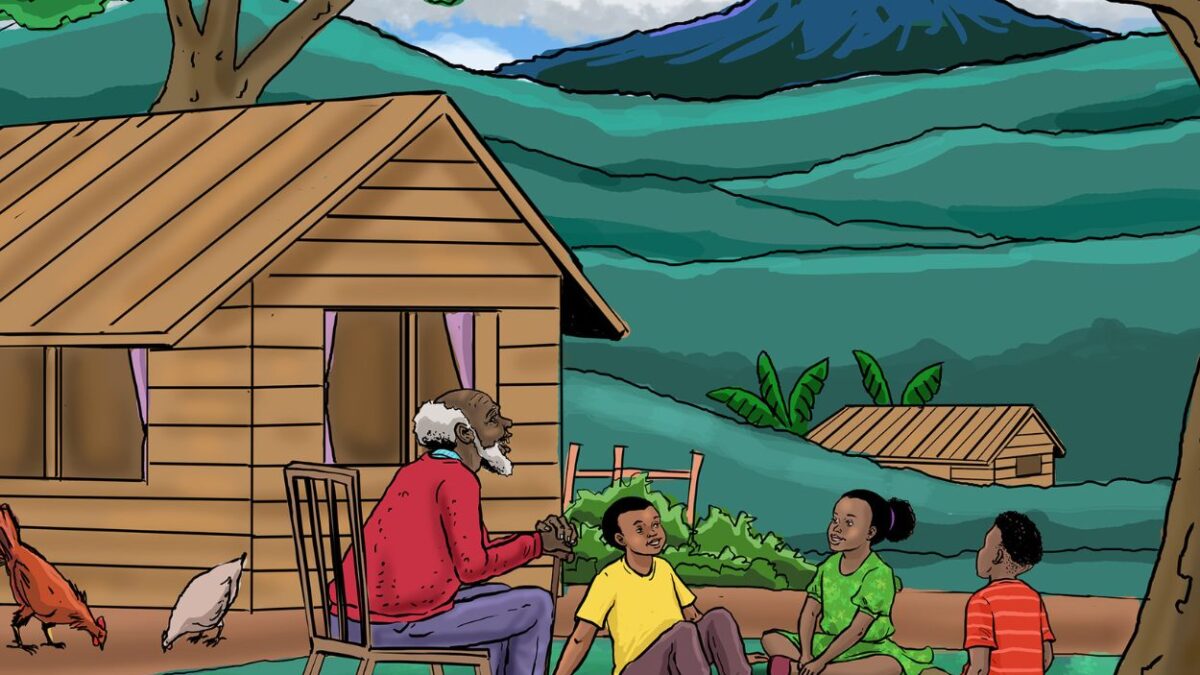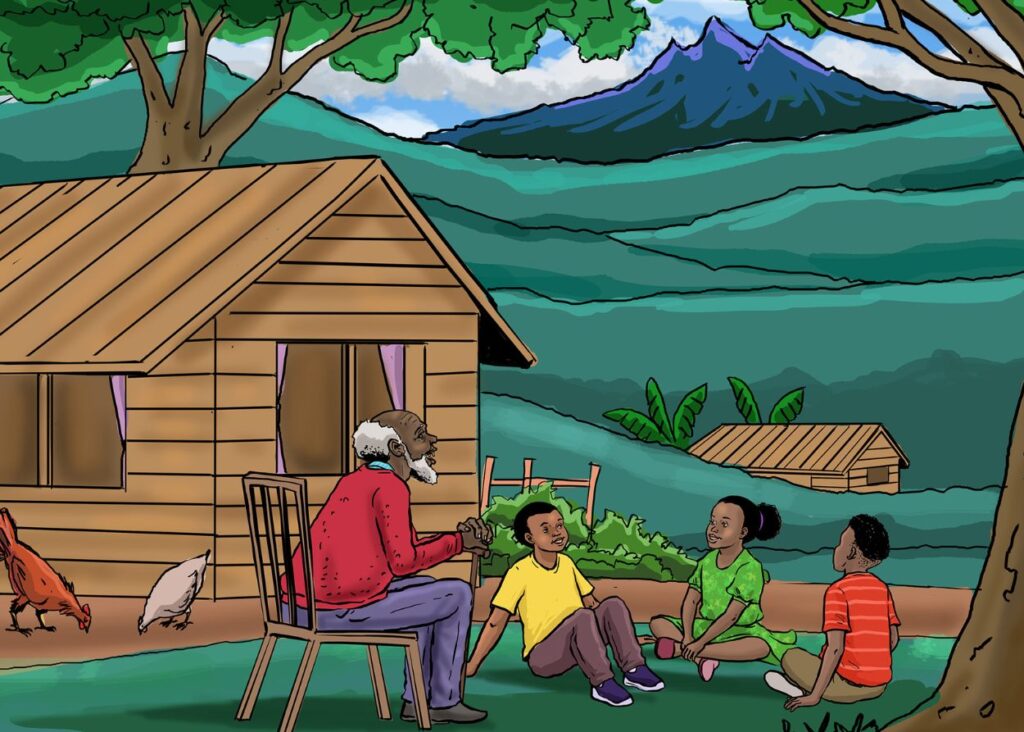The Heritage of Murang’a


Mzee Karanja is the oldest man in our village. Everyone loves him. He is very knowledgeable about our county, Murang’a.
“Yaro, can you please help me count my chicken and lock them in the pen?” requested our old neighbour, Mzee Karanja.
“Yay! I will even count their eggs!” I say excitedly.
“Talking about counting, did you know that counting one’s own children is considered bad luck?” Mzee Karanja says bringing out his stool.
My heart skips a beat because I know that the old man is getting ready to tell us another fascinating story of Murang’a. My friends overhear our conversation and they run over to listen too.
“No, I did not know that,” I answer. “Please explain, I do not understand why,” I implore.
“In the beginning, there were people who lived on that mountain over there called Kirinyaga,” he begins, pointing to the majestic mountain rising in the distance with his walking stick.
“The very first ones were Gikuyu and his wife Mumbi. They had ten daughters, but they could only count nine because it was thought to be a bad omen to count all ten,” he continues.
“Their daughters then formed the ten clans of the Agikuyu. Who knows the ten clans?” Mzee Karanja asks.
Njeri shot up with a grin on her face, “Wanjiru, Wanjiku, Waceera, Wairimu, Wangui, Wambui, Wangari, Wangeci, Nyambura and Wamuyu. In that order from the eldest to the youngest.”

“Yes, but Wamuyu the tenth daughter was never counted due to the tradition of not counting all of one’s children.” Mzee Karanja responds.
“Mzee Karanja, were there men too?” I asked.
“Oh yes Yaro. Aside from the women, there were men too. Great chiefs such as Karuri wa Gakure, Njiiri wa Karanja, Ndung’u wa Kagori.”
“And not to forget Wangu wa Makeri who was the only female chief!” said Njeri proudly.

Mzee Karanja pensively looked in the distance then let out a sigh before continuing
“Back when I was a little boy, this whole place used to be a very big forest called Metumi with many beautiful, huge trees.”
Mzee Karanja continued to explain that the name of the area had changed over time. It started out as Metumi, then in the colonial times the British called it Fort Hall after a British man Francis Hall and today it is Murang’a County.
“What about this tree we are sitting under? Was it part of the Metumi Forest?” Njeri asks.
“Ah, yes this one is precious.” Mzee Karanja says looking up at the tree with admiration.
“This is the wattle tree; it was introduced to Murang’a by a Reverend Watt from Australia. In the old days, the tree produced tannin and local people burned it for charcoal which they sold for some good money and took their children to school.” Mzee Karanja says.
“Did something happen to the wattle trees? We only have this one,” Njeri asks, noticing the sad look on his face.
“Well, people planted them for some time before they turned to farming tea and coffee, they cut down many trees,” he sadly explains.
Mzee Karanja picks up his stool and we know story time is over. I run over to the chicken pen and count the chicken, they are ten! Just like the daughters of Gikuyu and Mumbi.



